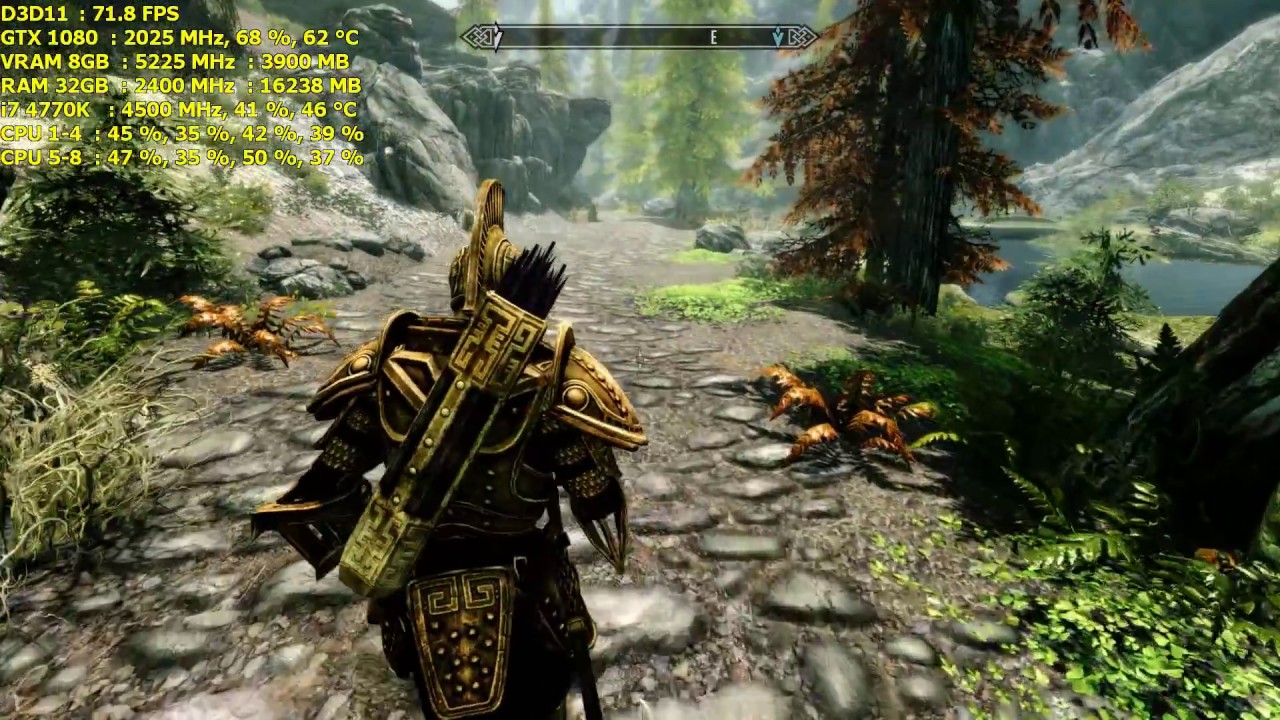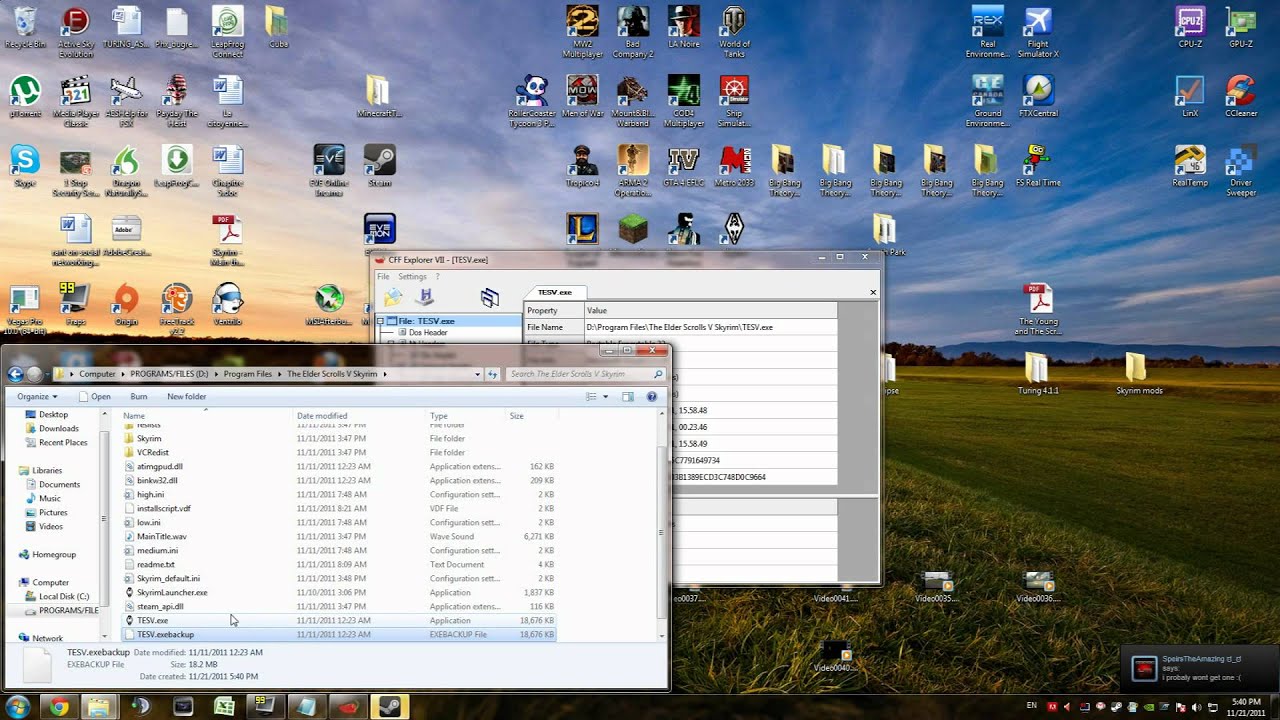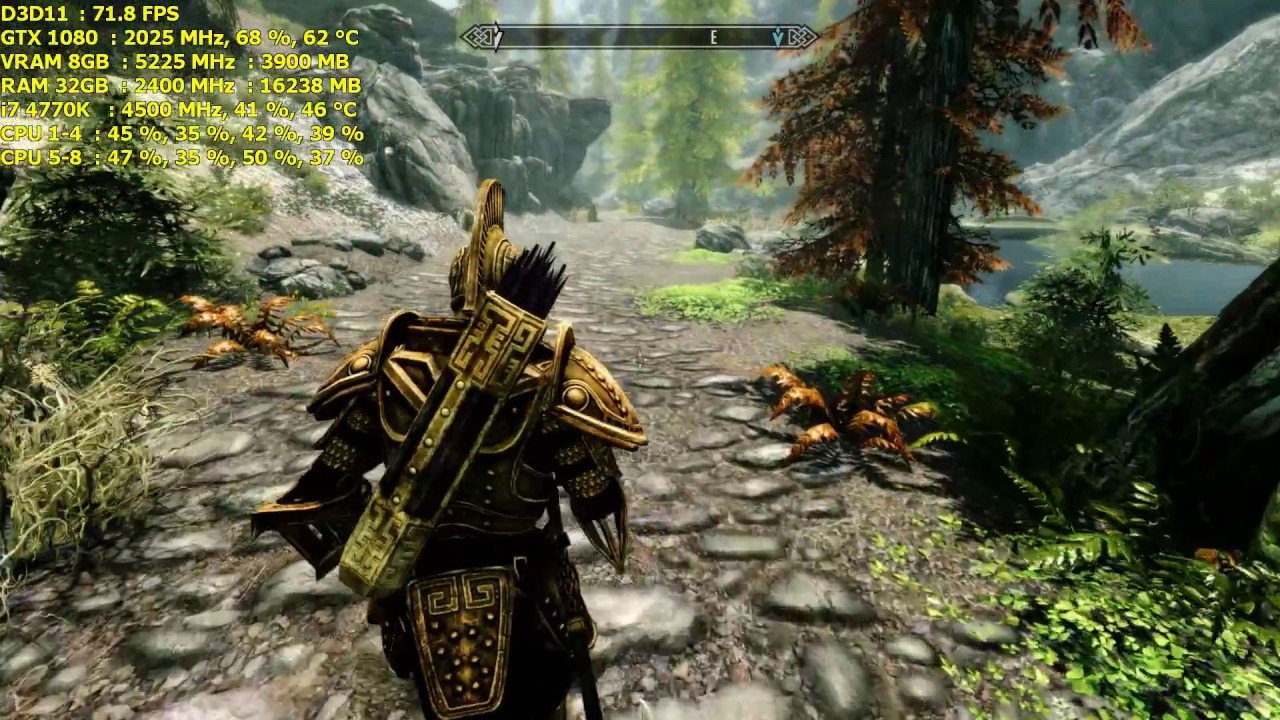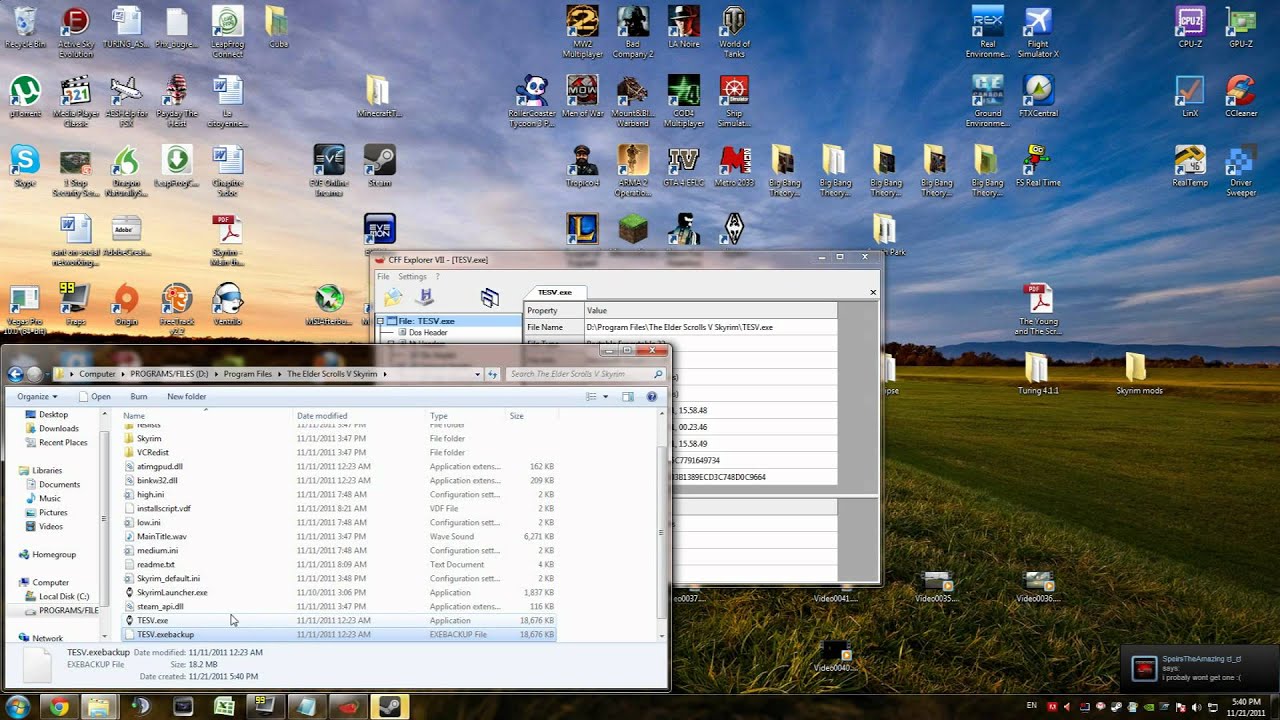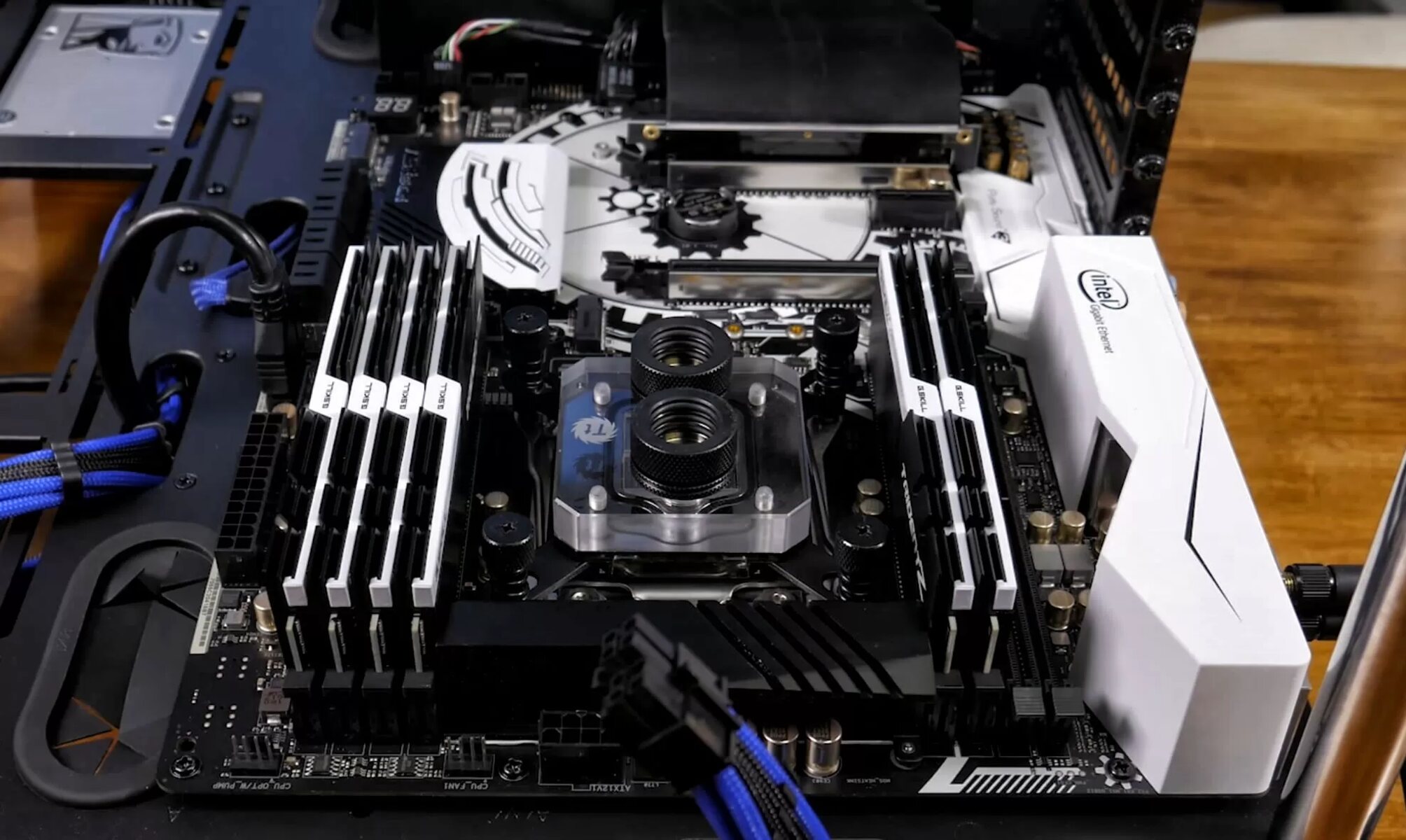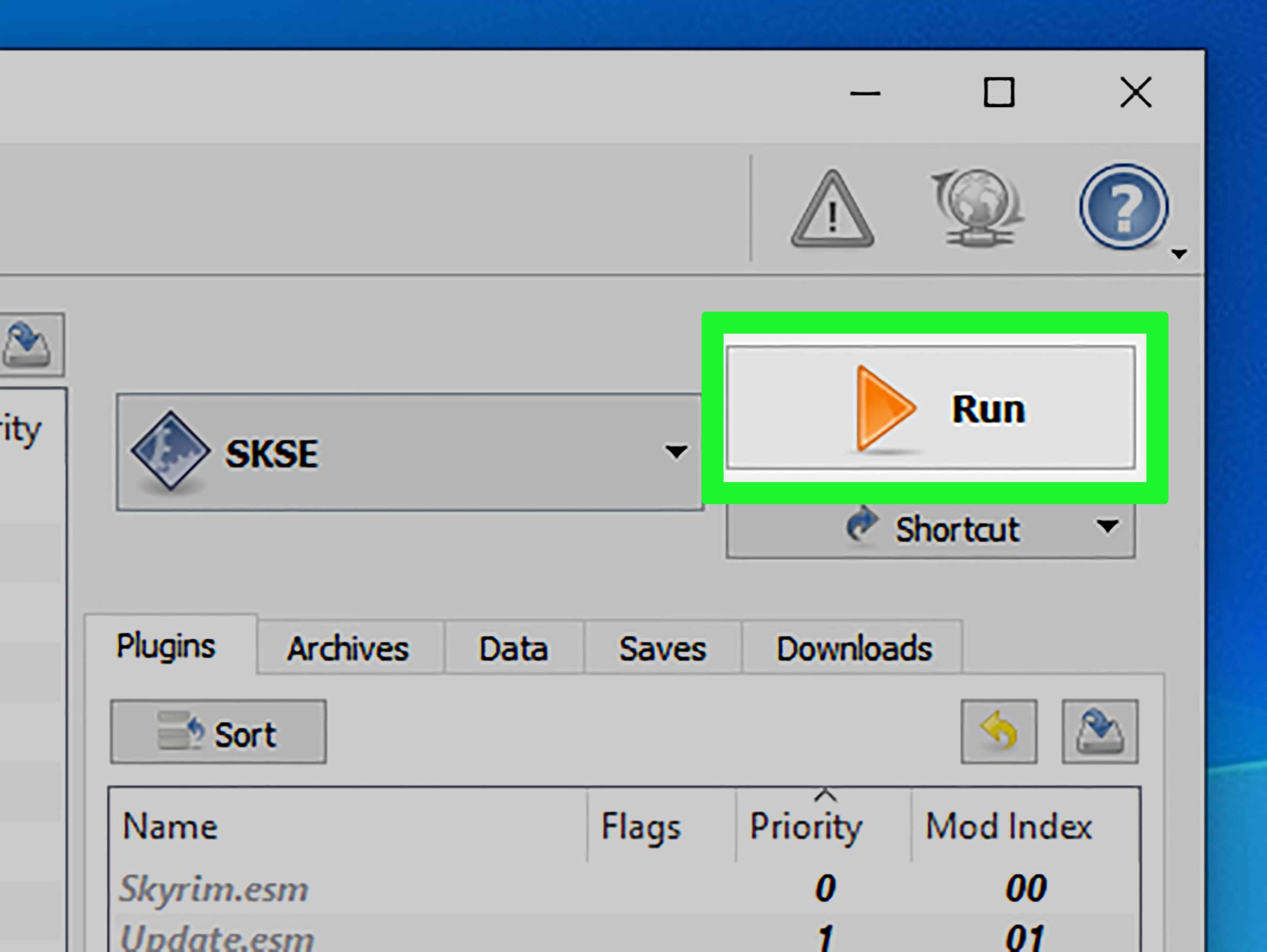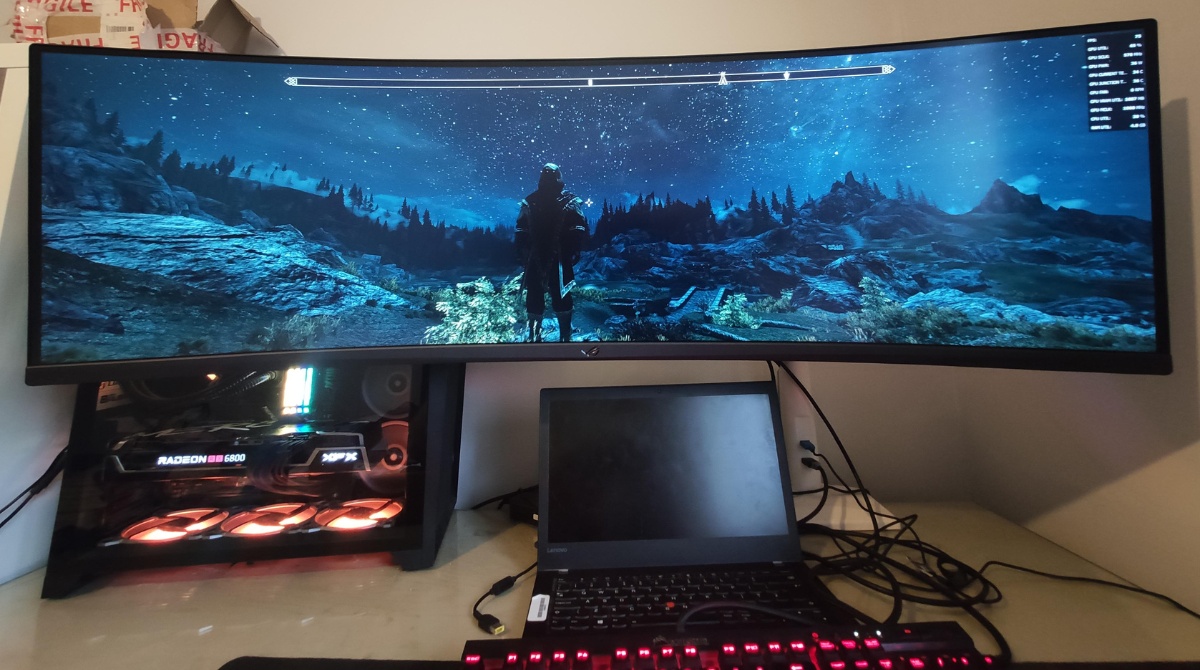Introduction
The popularity of video games has grown significantly over the years, with millions of gamers worldwide immersing themselves in virtual worlds and epic adventures. One such game that has captured the hearts of many is The Elder Scrolls V: Skyrim. Released in 2011, Skyrim offers players a vast open world to explore, filled with captivating quests, stunning visuals, and immersive gameplay.
However, to fully enjoy the gaming experience, it is essential to have a computer system that meets the game’s requirements, including sufficient RAM (Random Access Memory). RAM plays a crucial role in determining the performance and smoothness of a game, as it directly affects how quickly and efficiently the game can load and manipulate data.
For Skyrim, understanding the RAM requirements is vital, as it ensures that the game runs optimally and doesn’t suffer from performance issues such as lag or slow loading times. In this article, we will delve into the RAM requirements for Skyrim, discussing the minimum and recommended amounts, as well as exploring whether the game can utilize more than 4GB of RAM.
Whether you’re a casual gamer or a hardcore Skyrim enthusiast, understanding the impact of RAM on your gaming experience is crucial. So, let’s dive into the world of RAM and discover how much it can truly enhance your time in Skyrim.
What is RAM?
Before we dive into the RAM requirements for Skyrim, let’s quickly understand what RAM is and how it functions in a computer system.
RAM, or Random Access Memory, is a type of computer memory that is responsible for temporarily storing data that the computer needs to access quickly. It acts as a bridge between the computer’s processor and the data stored on the hard drive. When you launch an application or load a game, the required data is transferred from the storage drive to the RAM for faster access.
RAM is known for its speed and responsiveness, as it can read and write data much faster than a hard drive or solid-state drive (SSD). This allows your computer to quickly retrieve the required information when running programs or games, resulting in smoother multitasking and reduced loading times. Think of RAM as a short-term memory for your computer; the more RAM you have, the more tasks and data your computer can handle simultaneously without slowing down.
The capacity of RAM is measured in gigabytes (GB), and it is essential to have sufficient RAM to meet the requirements of the applications and games you use. If your computer doesn’t have enough RAM, it may struggle to run resource-intensive programs, leading to lag, frequent crashes, or long loading times.
In the case of Skyrim, having the right amount of RAM is crucial to ensure that the game runs smoothly without any performance issues. Without adequate RAM, you may experience laggy gameplay, delays in loading textures, or even crashes.
Now that we have a basic understanding of what RAM is and its role in a computer system, let’s explore the specific RAM requirements for running Skyrim.
RAM Requirements for Skyrim
In order to determine the RAM requirements for running Skyrim, we need to consider both the minimum and recommended specifications provided by the game developers. These requirements ensure that the game runs smoothly and provides an optimal gaming experience.
Let’s take a closer look at both the minimum and recommended RAM requirements for Skyrim:
- Minimum RAM Requirements: The minimum RAM requirement for Skyrim is 2GB. This means that your computer should have at least 2GB of RAM to run the game. However, it’s important to note that this minimum requirement may result in lower graphical settings and reduced performance. If possible, it’s recommended to have more than the minimum requirement to ensure a smoother gaming experience.
- Recommended RAM Requirements: The recommended RAM requirement for Skyrim is 8GB. This means that if you want to fully enjoy the game with high-quality graphics and smooth gameplay, it is recommended to have 8GB of RAM or more. With 8GB of RAM, you can expect better performance, faster loading times, and improved overall stability for an immersive gaming experience.
It’s worth noting that these RAM requirements are based on the vanilla version of Skyrim without any mods or additional content. If you plan on using mods or adding DLCs (Downloadable Content) to your game, it’s recommended to have even more RAM to accommodate the additional resources and optimize the performance.
Having an adequate amount of RAM ensures that the game can load and manage all the necessary assets, textures, and scripts without any slowdowns or performance issues. It allows for smoother gameplay, faster rendering times, and reduced loading screens.
Now that we understand the minimum and recommended RAM requirements for Skyrim, let’s explore whether the game can utilize more than 4GB of RAM and the impact of modding on RAM usage.
Minimum RAM Requirements
The minimum RAM requirement for running Skyrim is 2GB. However, it’s important to note that this minimum requirement may result in lower graphical settings and reduced performance.
Having only 2GB of RAM may lead to longer loading times and occasional lag during gameplay, especially in areas with complex textures and large amounts of data to process. The limited RAM capacity can cause the game to struggle in handling the game world and its related assets efficiently.
If your computer only meets the minimum RAM requirement, you might need to lower the graphical settings to maintain a decent frame rate and smooth gameplay experience. Lowering the settings can help reduce the strain on the limited RAM, allowing the game to run more seamlessly.
Even though the minimum RAM requirement allows you to run the game, it’s generally recommended to have more RAM for a better experience. With just 2GB of RAM, you might encounter more frequent crashes, slowdowns, and longer loading screens due to the system’s limited memory capacity.
If you find that your current system has only 2GB of RAM, consider upgrading your RAM to at least 4GB or higher. This will provide a noticeable improvement in performance, allowing Skyrim to run more smoothly and reducing the risk of system instability.
In summary, while it is possible to run Skyrim with the minimum 2GB of RAM, it is recommended to have more RAM for a better gaming experience. Upgrading your RAM to meet or exceed the recommended requirements will result in smoother gameplay, shorter loading times, and improved overall performance.
Recommended RAM Requirements
The recommended RAM requirement for Skyrim is 8GB. Having 8GB of RAM or more will provide a smoother gaming experience, allowing you to enjoy high-quality graphics and faster loading times.
With 8GB of RAM, Skyrim can effectively load and process the game world, textures, and various game assets, resulting in improved performance and stability. It ensures that the game runs without any noticeable lag or slowdowns, even in demanding areas with detailed environments and complex AI interactions.
Having more RAM allows for better multitasking capabilities, where you can run other applications or background processes without affecting Skyrim’s performance. You can seamlessly switch between the game and other programs, such as web browsers, streaming software, or communication tools.
Furthermore, having 8GB of RAM or more is particularly beneficial if you plan to use mods or add additional content to your Skyrim game. Mods can enhance the game’s graphics, introduce new quests, characters, and gameplay mechanics. However, mods also require additional memory resources to load and run smoothly. With 8GB of RAM or more, you can accommodate the extra demands of mods, ensuring optimal performance without overwhelming your system’s memory capacity.
It’s worth noting that as Skyrim continues to age and mods become more advanced, the recommended RAM requirement may increase. It’s always a good idea to have more RAM than the recommended requirement to future-proof your gaming setup and avoid potential performance issues as new mods and updates are released.
If you’re experiencing performance issues or planning to enhance your Skyrim experience with mods, upgrading your RAM to 8GB or more is highly recommended. This will provide the necessary resources for Skyrim to run smoothly and ensure an immersive gaming experience without compromising performance.
In summary, having 8GB or more of RAM is the recommended requirement for running Skyrim. It enhances the game’s performance, enables seamless multitasking, and prepares your system for future modding possibilities.
Can Skyrim Use More Than 4GB of RAM?
Many players wonder if Skyrim can utilize more than 4GB of RAM, especially considering that the game was released in 2011 when 4GB of RAM was the standard for most gaming systems. The good news is that Skyrim can indeed utilize more than 4GB of RAM, thanks to the game’s support for Large Address Aware (LAA) mode.
By enabling LAA mode, Skyrim can take advantage of the system’s available RAM beyond the 4GB limit, allowing for improved performance and stability, particularly when running extensive mods or using high-resolution textures.
Enabling LAA mode requires modifying a specific system file, the Skyrim executable (TESV.exe), to notify the game that it can utilize more memory. This modification increases Skyrim’s memory address space, allowing it to access and utilize additional RAM.
However, it’s important to note that enabling LAA mode does have its limitations. While Skyrim can utilize more than 4GB of RAM, it cannot utilize an unlimited amount of RAM. The maximum amount of RAM Skyrim can effectively use is around 3.1GB, even with LAA mode enabled. This limitation is due to the game’s 32-bit architecture, which restricts its ability to access memory beyond this threshold.
To fully take advantage of a system with more than 4GB of RAM, including the additional RAM beyond the 3.1GB limit, it is necessary to use third-party tools and mods specifically designed to address this limitation. These tools, such as ENBoost or the Skyrim Memory Patch, can help optimize Skyrim’s memory management, allowing for more stable performance and reducing the possibility of crashes or stuttering.
In summary, while Skyrim can utilize more than 4GB of RAM through LAA mode, there are still limitations due to the game’s 32-bit architecture. Nevertheless, utilizing tools and mods that optimize memory usage can help maximize the benefits of having more than 4GB of RAM, resulting in a smoother and more enjoyable Skyrim experience.
Modding and RAM Usage in Skyrim
One of the reasons Skyrim has maintained its popularity over the years is its vibrant modding community. Mods allow players to customize and enhance their gaming experience by adding new content, improving graphics, tweaking gameplay mechanics, and much more. However, it’s important to consider the impact of modding on RAM usage in Skyrim.
When you install mods, they often require additional memory resources to load and run alongside the base game. The more mods you have installed, the more RAM Skyrim will need to allocate to handle the increased amount of data and assets.
Mods that introduce high-resolution textures, complex AI systems, or new game mechanics can significantly increase the RAM requirements of Skyrim. It’s not uncommon for heavily modded Skyrim setups to require 8GB or more of RAM to ensure smooth performance and stability.
It’s worth noting that improperly optimized or conflicting mods can exacerbate RAM usage issues and potentially lead to performance problems, crashes, or even corrupt save files. It’s important to carefully manage and monitor the mods you install, ensuring they are compatible and don’t overwhelm your system’s memory capacity.
To mitigate potential RAM usage issues caused by mods, there are a few steps you can take:
- Choose mods wisely: Be selective in choosing mods that are well-optimized and offer the desired enhancements without putting too much strain on system resources.
- Monitor RAM usage: Use system monitoring tools to keep an eye on your RAM usage while playing Skyrim with mods. This will help identify any potential issues or excessive memory consumption.
- Consider performance-enhancing mods: Some mods, such as Skyrim Performance PLUS or optimized texture packs, can help reduce RAM usage and improve overall performance without sacrificing visual quality.
- Upgrade your RAM: If you find that your modded Skyrim setup is pushing the limits of your current RAM capacity, consider upgrading to 16GB or more to ensure smooth and stable performance.
In summary, modding can have a significant impact on RAM usage in Skyrim. It’s essential to choose mods carefully, monitor resource consumption, and take necessary steps to optimize performance and stability. By managing mods effectively and having enough RAM to handle their requirements, you can create a highly customized and immersive Skyrim experience.
Overclocking RAM for Better Performance in Skyrim
If you’re looking to squeeze every last drop of performance out of your system when playing Skyrim, overclocking your RAM can be a viable option. Overclocking involves increasing the speed and performance of your RAM beyond its manufacturer’s specifications. By doing so, you can potentially achieve faster data transfer rates, reduced latency, and improved overall performance.
Before diving into overclocking, it’s important to understand the risks involved. Overclocking can put additional stress on your RAM, potentially leading to instability or even permanent damage if done improperly. Therefore, it’s essential to proceed with caution and follow safety precautions.
To overclock your RAM effectively, follow these steps:
- Research and understand your RAM: Identify the specifications, voltage requirements, and maximum frequency of your RAM modules. This information will serve as a reference point when tweaking settings.
- Access BIOS settings: Restart your computer and enter the BIOS or UEFI menu by pressing the designated key during startup (often F2, Del, or Esc). Consult your motherboard’s manual for specific instructions.
- Adjust RAM settings: Look for options related to RAM or memory in the BIOS menu. Increase the frequency or speed gradually, making small adjustments at a time. Test stability after each adjustment.
- Monitor temperatures: Higher RAM frequencies can generate more heat. Keep an eye on the temperature using monitoring tools and ensure that it stays within safe limits.
- Stress test and stability testing: Run stress testing software, such as Memtest86 or Prime95, to verify the stability of your overclocked RAM. These tests help identify any errors or issues that may arise during prolonged usage.
- Fine-tune and optimize: If stability is achieved, you can continue fine-tuning the settings to find the optimal balance between performance and stability. Remember that not all systems and RAM modules are the same, so experimentation may be required.
By successfully overclocking your RAM, you can potentially experience improved performance in Skyrim. This can result in faster loading times, smoother gameplay, and reduced stuttering, particularly in heavily modded setups or during resource-intensive scenes.
However, it’s important to note that the performance gains achieved through RAM overclocking may vary depending on other hardware components and system configurations. It’s also crucial to maintain proper cooling for your system to prevent overheating.
If you’re uncomfortable with manually overclocking your RAM, consider utilizing XMP (Extreme Memory Profile) settings if supported by your motherboard. XMP automatically applies preconfigured settings optimized for performance.
In summary, overclocking your RAM can potentially provide a performance boost in Skyrim, enhancing your gaming experience. However, proceed with caution, follow safety guidelines, and monitor system stability to avoid any potential risks.
Conclusion
RAM plays a crucial role in determining the performance and smoothness of running Skyrim. Understanding the RAM requirements for the game ensures that it runs optimally, without any performance issues. In this article, we explored the minimum and recommended RAM requirements for Skyrim, as well as the game’s ability to utilize more than 4GB of RAM.
We discussed how having at least 2GB of RAM is the minimum requirement for running Skyrim, but it may result in lower graphical settings and reduced performance. On the other hand, having 8GB or more of RAM is the recommended requirement, providing a smoother gaming experience and allowing for high-quality graphics and faster loading times.
We also explored how Skyrim can utilize more than 4GB of RAM through the Large Address Aware (LAA) mode, enabling improved performance and stability. However, due to the game’s 32-bit architecture, Skyrim can only effectively use around 3.1GB of RAM, even with LAA mode enabled.
Additionally, we discussed the impact of modding on RAM usage in Skyrim. Modding brings new content and features to the game but also requires additional memory resources. It’s important to carefully manage mods and monitor RAM usage to ensure optimal performance and stability.
Finally, we explored the option of overclocking RAM for better performance in Skyrim. Overclocking can potentially enhance the game’s performance, resulting in faster loading times and smoother gameplay. However, it should be approached with caution and proper knowledge of the risks involved.
In conclusion, understanding the RAM requirements and effectively managing RAM resources are essential for an immersive and enjoyable Skyrim experience. Whether you meet the minimum requirements or go beyond with recommended or overclocked RAM, optimizing your system’s memory capacity will significantly enhance your time in the epic world of Skyrim.







